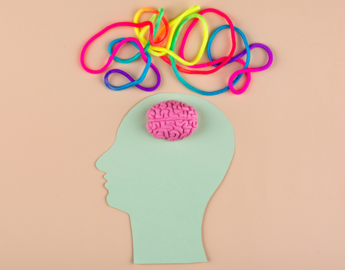UDL and Modality
In higher education, Universal Design for Learning (UDL) is a dynamic framework that caters to diverse student needs across various modalities (CAST, 2025). Whether in traditional in-person settings, fully online environments, blended courses or hybrid models, the principles of UDL can be applied to create inclusive and accessible learning experiences.
At the end of this module, you should be able to
- Analyze how different learning modalities (synchronous, asynchronous, hybrid and multi-access) impact accessibility and inclusivity in higher education
- Apply Universal Design for Learning (UDL) principles to create flexible and inclusive learning experiences across various modalities.
- Evaluate strategies for supporting accessibility and learner engagement through multiple means of representation, action and expression.
There are many benefits to incorporating UDL principles in your courses, regardless of the course modality. Some of these benefits include:
- Flexibility – UDL supports flexibility in content delivery, engagement strategies and assessment methods, allowing students more autonomy in their learning experience.
- Inclusivity – By embracing UDL principles, higher education institutions promote inclusivity, ensuring that all students, regardless of their learning preferences or abilities, can access and succeed in their academic journey.
The following is a breakdown of the opportunities that may enhance student learning with each UDL principle. Specific strategies are not unique to a certain modality. Most can be adapted to suit a different modality.
Lesson checklist
- Create inclusive learning through diverse methods and flexibility
- Support accessibility across all learning modalities
UDL Principle: Multiple Means of Engagement
| Strategies for higher education | Face-to-face examples | Online examples | Blended and hybrid examples |
| Variety in teaching and learning activities | Incorporate discussions and small group activities into lecture classes Case studies with discussion, online or in class Interactive lectures with real-world examples and visual models | Online whiteboards for brainstorming Discussion board for sustained discussions Provide transcripts and captions for all videos and audio content | Combine live demonstrations with recorded tutorials Embed example exam questions in lecture notes |
| Incorporate student choice | Student presentations on choice of topic | Self-select discussion groups based on interest Consider whether offering flexibility around the type of assessments is appropriate for your course | Student choice of attending in person or online in hybrid classes |
| Develop student autonomy | Student presentations on choice of topic Incorporate student goal setting | Use checklists for students to monitor their progress | Incorporate metacognitive activities in the course Offer interactive content with flexible pathways for exploration |
| Incorporate learning technologies | Aim for learning technologies that are easy to use on a variety of devices and freely available, such as campus-supported tools | Simulations Virtual field trips Use technologies that allow participants to write, use speech or videos, or draw to contribute to the conversation | Use technologies that engage students in multiple locations such as Padlet |
| Interaction with others | Group projects Study groups
| Incorporate jigsaws and world cafés Breakout groups in synchronous sessions Form groups of about six students in large courses so they get to know a few people well | Problem-based learning Case studies |
| Student self-regulation and motivation | Incorporate assessment literacy Rubrics given at the beginning of an assignment to prompt self-evaluation | Integrate metacognition into graded assignments Checklists for students to track their own progress | Online quizzes for self-assessment of learning Use exam debriefs Learning checklists and interactive study guides Guided notes to scaffold student learning |
| Create a positive learning environment | Model compassion and communication Evaluate the output of generative artificial intelligence for biases | Encourage participation in Zoom Keep students on pace with the course using a variety of tools, such as the LMS calendar, checklists and weekly emails with important dates and deadlines | Connect remote and face-to-face students Cultivate equity, diversity and inclusion (EDI)
|
| Incorporate inclusivity, diversity and multiple perspectives | Incorporate multiple perspectives through activities such as discussions about case studies Design courses for inclusivity | Use learning technologies to present content in different ways, such as a digital welcome note Diversify course content through multiple sources and authors | Create inclusive course outlines Learn about anti-racism, EDI and positionality in teaching and learning |
| Cultivate empathy and restorative practices | Use a circle practice for the learning community to check in with one another | Encourage students to have an accountability partner to share responsibility within the learning community Practice a pedagogy of kindness | Examine your teaching practices for ableism and disabling learning environments |
UDL Principle: Multiple Means of Action & Expression
| Strategies for higher education | Face-to-face examples | Online examples | Blended and hybrid examples |
| Use technology to customize the display of information and boost accessibility | Document cameras to displace text and visuals Digital annotation tools for reading assignments Pre-class readings with in-class discussions using multimedia | Create accessible course content Accessibility tools in Brightspace (D2L) Use open education resources (OERs) | Recorded lectures with interactive quizzes for review Screen-reader friendly documents and alt text for images Put a copy of the course text on reserve in the library, and order a digital version for the library if possible |
| Incorporate multimodal sources of information | Record class presentations | Use alt text for images Use models, graphics, frameworks, charts and graphs, in addition to text | Include text to speech for videos |
| Incorporate multiple perspectives and pedagogical approaches | Some tried and true in-class activities require no technology, only active engagement, such as a fishbowl, mind dump and think break | Encourage participation in online synchronous classes using Zoom, with activities such as think-pair-share Collaborative activities are possible in any modality | Use different pedagogical approaches to topics or concepts, such as logic, statistics, narrative, case studies, multiple perspectives, group work and testimonials |
| Connect prior knowledge to new learning | Use learning outcomes. Review past outcomes and point out how they build up to current ones | Use the whiteboard in Zoom to model a think-aloud protocol, diagramming and graphic organizers | Have students keep a learning journal. Encourage them to consider how the current unit connects to previous ones as well as to prior courses |
| Highlight and explore patterns, critical features, big ideas and relationships | Highlight patterns and themes between ideas, and have students create a concept map | Use outlines and graphic organizers (College of William & Mary School of Education, 2014) | Review key concepts at the beginning of a lecture (La et al., 2018)
|
| Cultivate multiple ways of knowing and making meaning | Consider Indigenous Ways of Knowing in course design | Students create their own glossary of terms throughout the course | Incorporate student-created materials such as a graphic organizer or Padlet notes |
Conclusion
Universal Design for Learning is not bound by the modality of instruction. Instead, it is a versatile approach that enhances the educational experience for students across in-person, online, blended and hybrid modalities in higher education. By implementing UDL principles, educators create a learning environment that is responsive, flexible and truly inclusive.
Activity
These worksheets include ideas for incorporating UDL in face-to-face, online, blended and hybrid modalities, though many of them can be adopted or adapted for other modalities as well. The right-hand column is provided for you to provide your own ideas.
Additional resources
Abegglen, S., Aparicio-Ting, F. E., Arcellana-Panlilio, M., Behjat, L., Brown, B., Clancy, T. L., DesJardine, P., Din, C., Dyjur, P., Ferreira, C., Hughson, E. A., Kassan, A., Klinke, C., Kurz, E., Neuhaus, F., Pletnyova, G., Paul, R. M., Peschl, H., Peschl, R., & Squance, R. T. (2021). Incorporating Universal Design for Learning in disciplinary contexts in higher education (M. Arcellana-Panlilio and P. Dyjur, Eds.). Taylor Institute for Teaching and Learning, University of Calgary. https://taylorinstitute.ucalgary.ca/resources/incorporating-universal-design-for-learning-in-disciplinary-contexts-in-higher-education-guide
CAST. (n.d.). UDL on campus: Universal Design for Learningin higher education. https://udloncampus.cast.org/home
La, H., Dyjur, P., & Bair, H. (2018). Universal design for learning in higher education. Taylor Institute for Teaching and Learning, University of Calgary. https://taylorinstitute.ucalgary.ca/resources/universal-design-learning-higher-education
Takacs, S., Zhang, J., & Lee, H. (2020). Universal design for learning: Strategies for blended and online learning. Centre for Teaching and Innovation, Justice Institute of British Columbia. https://sswd.jibc.ca/wp-content/uploads/2021/06/Universal-Design-for-Learning_Strategies-for-Blended-and-Online-Learning.pdf
UDL Hub (n.d.). UDL Worksheets. University of British Columbia, Vancouver Campus. https://udlhub.ubc.ca/resources-and-guides/udl-worksheets/
References
Moriña, A., Carballo, R., & Doménech, A. (2025). Transforming higher education: A systematic review of faculty training in UDL and its benefits. Teaching in Higher Education, 1–18. https://doi.org/10.1080/13562517.2025.2465994
CAST. (2025). Universal Design for Learning. https://www.cast.org/impact/universal-design-for-learning-udl
College of William & Mary School of Education. (2014). Graphic organizers: Guiding principles and effective practices considerations packet. College of William & Mary in Williamsburg. https://education.wm.edu/centers/ttac/documents/packets/graphicorganizers.pdf
Rao, K. (2021). Inclusive instructional design: Applying UDL to online learning. The Journal of Applied Instructional Design. https://edtechbooks.org/jaid_10_1/preparing_teachers_f
Qu, X., & Cross, B. (2024). UDL for inclusive higher education – What makes group work effective for diverse international students in U.K.? International Journal of Educational Research, 123, 1–11. https://doi.org/10.1016/j.ijer.2023.102277
Yuwono, I., Mirnawati, M., Kusumastuti, D. E., & Ramli, T. J. (2023). Implementation of Universal Design for Lesrning (UDL) concepts on learning in higher education. Education. Innovation. Diversity, 2(7), 16–23. https://doi.org/10.17770/eid2023.2.7355







